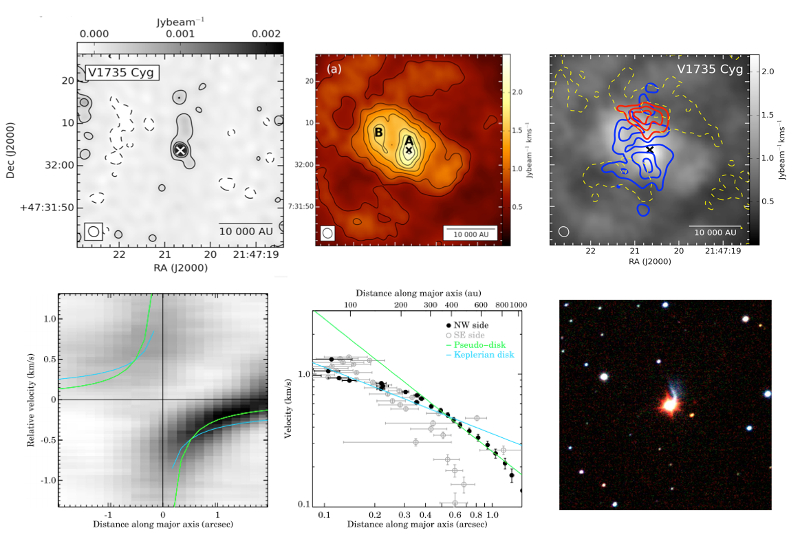| EPoS Contribution |
|
Revealing the Process and Characteristics of Episodic Accretion in FU Orionis-Type Eruptive Young Stars
Orsolya Feher Konkoly Obs, Budapest, HU | |
| The earliest phases of disk evolution are characterized by intense mass accretion, that may exhibit episodic peaks called outbursts. FU Orionis-type stars (FUors), especially the more embedded ones, may be the archetypes of these short but important evolutionary periods. Recurring outbursts might explain the "luminosity problem" of young stars, might play a key role in accumulating the final mass of the star and can have a significant effect on the parameters of the disk and the envelope. In the framework of an ERC project at Konkoly Observatory (Structured Accretion Disks) we are conducting a systematic investigation of the youngest populations of FUors at optical-infrared and millimeter wavelengths. We are addressing the question whether these outbursting objects represent normal embedded Class I objects in exceptional times (implying that all young stars undergo eruptive phases) or they are unusual objects. For that, we use ALMA and NOEMA to study the structure of their envelopes and disks, and compare the results with similar studies on more evolved, Class II-like FUors. We revealed a diverse sample of envelope masses and circumstellar morphologies among eight northern targets, and the corresponding study on southern objects with ALMA is ongoing. I will also report on a deeper study of an archetype embedded FUor, V346 Nor, where we could outline an infalling and rotating pseudo-disk and a keplerian disk. We also determined that there is a mismatch between the infall and the accretion rates - this might suggest that the physical reason of the outburst is transporting matter from the envelope to the inner disk with too high rate for the disk-star accretion channels. Finally, I will characterize the progenitor and environment of V582 Aur with archival and new optical, infrared and millimeter observations. | |
 | |
| Caption: Upper row: 2.7 mm continuum and 13CO(1-0) integrated line intensity maps of the embedded FUor V1735 Cyg, showing a massive envelope. The third image shows the observed red and blue outflow lobes plotted on the 13CO integrated intensity map. Yellow dashed contours show areas with large linewidths. Bottom row, first two images: position-velocity diagrams of the FUor V346 Nor. The inner part of the mapped structure can be fitted with Keplerian rotation, while the outer part can be fitted with a so-called pseudo-disk, exhibiting both infall and rotation. The last image shows our WHT/LIRIS observations in J, Hc and Kc bands centered on the evolved FUor V582 Aur in a 15x15' area, showing a faint reflection nebulosity. | |
| Collaborators: A. Kospal, Konkoly Obs, HU P. Abraham, Konkoly Obs, HU Ch. Brinch, NBIA, DK T. Csengeri, MPIfR, DE M.M. Dunham, SU NY, US Th. Henning, MPIA, DE M.R. Hogerheijde, Leiden U, NL M. Kun, Konkoly Obs, HU E.I. Vorobyov, U Vienna, AT |
Key publication
Suggested Session: Protostellar disks |

